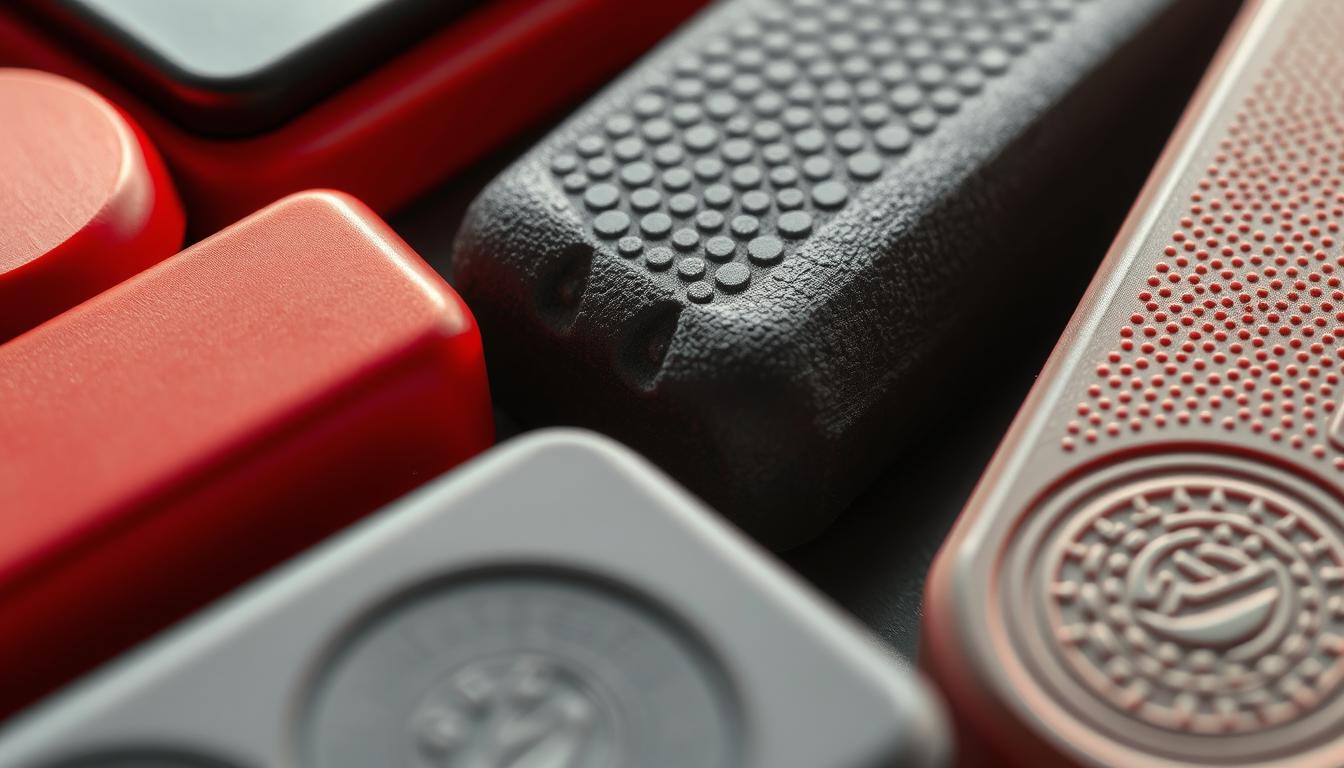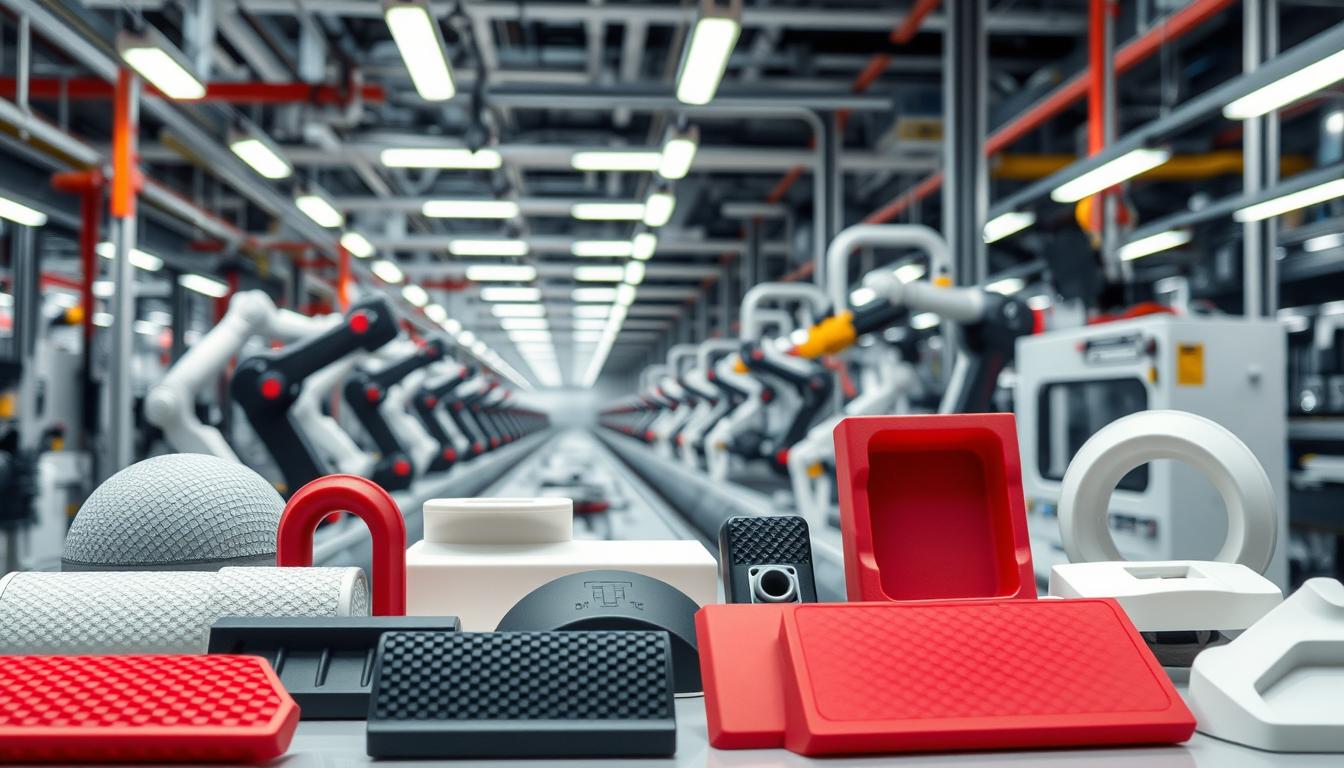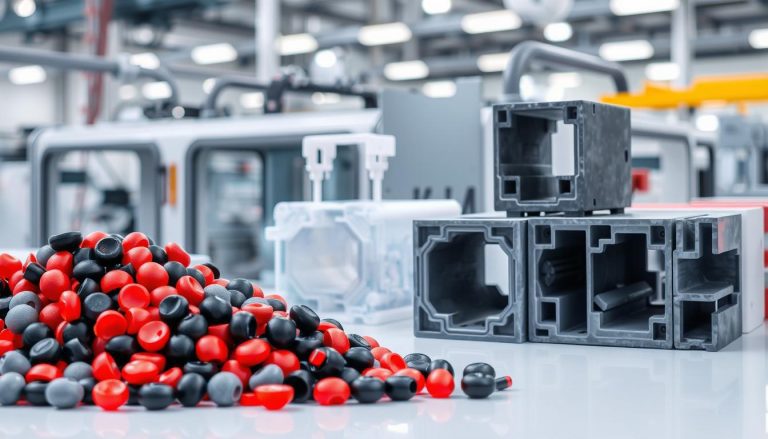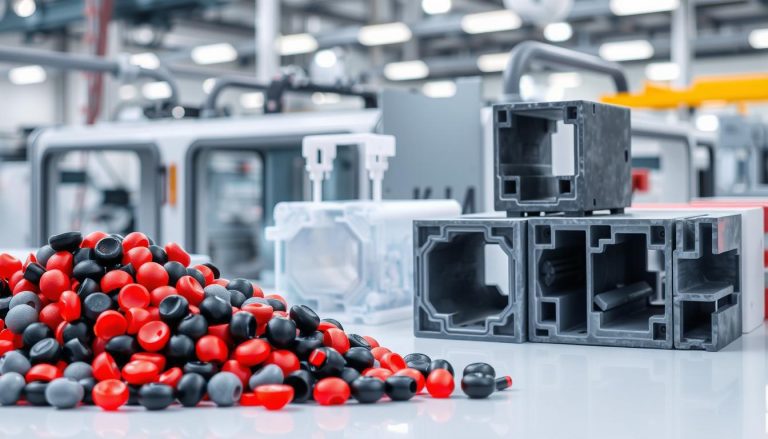In this article, we show you how to improve the feel of plastic parts. Haptics are very important for the user experience. It influences how we experience and use products.
The use of new materials and processes can improve the feel. This increases user satisfaction. We explain how engineers and technical decision-makers can improve the haptics of plastic parts.
This helps to increase the competitiveness of the products. For more information on surface finishing processes for plastic parts, visit this link. The article is divided into different sections. These deal with the theory and practice of haptics on plastic parts.
Key findings
- Haptics have a significant influence on the user experience.
- Innovative materials can significantly improve the feel of plastic parts.
- Surface finishing processes are crucial for optimizing the feel.
- A well-designed prototype can strengthen the perception of haptics.
- The choice of material plays a central role in haptic optimization.
- Technological innovations promote the development of more user-friendly products.
- An increase in haptics generally leads to higher customer satisfaction.
Introduction to the feel of plastic parts
Haptics are very important when it comes to plastic parts. It describes how we feel materials when we touch them. This ability influences how well we find and buy a product.
Plastic parts are everywhere. They are in everyday objects and special parts. Haptics improve the interaction between people and products. Companies can use haptic elements to increase customer satisfaction.
In this introduction, we explain important terms for the haptics of plastic parts. We show how haptics can be improved to enhance the user experience. We focus on practical methods that are helpful in development and production.
The importance of haptics in the user experience
Haptics are very important for the user experience. It influences how users see and evaluate a product. When designing plastic parts, it is important to consider the physical properties and textures.
Influence on perception
The perception of products depends heavily on their feel. Materials that feel good evoke positive feelings. Studies show that products that feel good are often rated better.
Designers should keep these points in mind to create a great user experience. If you want to learn more about plastic parts, visit this link.
Psychological aspects of haptics
Studies show that haptics have a major influence on purchasing behavior. Users feel emotionally connected to products with good haptics. These psychological aspects influence what we buy and how satisfied we are.
Consciously incorporating these insights into the design improves the user experience and market opportunities.
Factors that influence haptics
The feel of plastic parts depends on various factors. These factors are important for the user experience. They determine how we feel products.
Surfaces, materials and design play a major role in the design. They help to achieve the best feel.
Surface finish
The type of surface strongly influences the feel. Different textures feel different. Smooth surfaces are pleasant, while rough surfaces appear more robust.
The right surface treatment is important. It determines how we feel a product.
Choice of material
The material is very important for the feel. Different materials feel different. Plastics with soft properties are more pleasant to the touch.
The right choice of material is crucial. It influences how well a product works.
Shape and design
A good design and ergonomic shape are also important. They should improve handling. This creates a positive feeling when using it.
An appealing design not only makes a product better. It also makes it more pleasant for the user.
| Influencing | factors | Examples of effects on haptics |
|---|---|---|
| Surface texture Rough | smooth, textured Changes in the sense of touch | visual quality |
| Choice of material | Polypropylene, rubber, ABS Softness, | flexibility, robustness |
| Shape and design | Ergonomic, aestheticComfort, | user-friendliness |
The feel of plastic parts: Innovative materials
Innovative materials are very important in modern manufacturing. They improve the feel of plastic parts. Soft and flexible plastics feel good and make them more pleasant to use.
Soft and flexible plastics
Flexible plastics have special properties. They are highly elastic and malleable. One example is thermoplastic polyurethane (TPU). It is very flexible and feels good to the touch.
These plastics are easy to work with. They enable creative designs without losing functionality.
Use of additives for a better feel
Additives can greatly improve plastics. They improve the feel. Additives can influence the surface and improve properties such as slip resistance.
The targeted use of additives adapts plastics to various requirements. For more information on innovative materials and their application, click here: Production resources.
The right choice of materials and additives improves the feel of products. This enables companies to hold their own against the competition. The combination of soft plastics and additives opens up new possibilities in product development.
| Material | Properties | Application |
|---|---|---|
| Thermoplastic polyurethane (TPU) | Flexible, abrasion-resistant | Automotive and sporting goods |
| Silicone | Heat-resistant, soft | Household goods, medical products |
| Polyvinyl chloride (PVC) | Permanent flexibility, easy to process Packaging, | construction industry |
Modern processes to improve the feel
The haptic improvement of plastic parts is greatly enhanced by modern processes. These technologies achieve more precise results and offer a better user experience. 3D printing has become particularly useful in this regard.
3D printing allows surfaces to be precisely customized. This leads to a better feel. This makes the user experience much more pleasant.
Traditional methods such as injection molding are also becoming more modern. They can now be better adapted to haptic requirements. The combination of modern processes and proven techniques increases product quality and user satisfaction.
Surface treatments to optimize the feel
Surface treatments improve the feel of plastics. We change the surface by blasting and polishing. This makes contact with the skin more pleasant.
These treatments help to design the feel exactly as users want it.
Blasting and polishing
Blasting makes the surface smoother. This gives the plastic parts an elegant appearance. Polishing makes them even smoother, which makes them more visually and tactically appealing.
By combining these methods, we achieve great haptic results.
Structural changes to the surface
There are also other ways to change the surface. Chemical treatments or coatings can adapt the feel. This is how we meet specific requirements in different areas.

Presentation of technologies to improve haptics
In our fast-moving world, it is important to find new technologies for better haptics. 3D printing and nanotechnology show great potential.
3D printing and its possibilities
3D printing is changing the way we manufacture plastic parts. It offers flexibility and customization. Materials are precisely layered to achieve special haptic properties.
Unternehmen können schnell Prototypen herstellen und diese sofort anpassen.
Nanotechnology in plastics processing
Nanotechnology improves materials. Nanoparticles in plastics change the feel. They increase the surface roughness or smoothness.
This influences how we touch something. The technology is used in the automotive and packaging industries. It improves the customer experience.
Application examples for improved haptics
In this section, we take a look at application examples. These show how important haptics are in industry. Haptics are particularly important in the automotive industry and for packaging solutions.
Automotive industry
The automotive industry makes very good use of haptics. Manufacturers use new materials and techniques. The result is an interior that feels good and is easy to use.
Many companies are experimenting with special plastics. These are not only beautiful, but also offer a unique tactile experience.
Packaging solutions
Haptics are very important for packaging. It influences how people perceive brands. Special materials and surfaces improve the experience enormously.
Packaging that stands out due to its feel can influence the decision to buy. Innovative food packaging is a good example of this. These focus on sustainable and user-friendly design. This improves the consumer’s overall experience.

Future prospects in haptics research
The future of haptics research looks very promising. New technologies and materials will revolutionize the haptics of plastics. Haptic feedback systems could soon become the norm. Engineering and psychology are working together to improve the user experience.
There are trends towards intelligent materials that can adapt. These materials could increase haptics and energy efficiency. Haptics research also uses findings from neuroscience to better understand human perception.
One focus is on new production techniques. These enable dynamic surface structures. They improve the functionality and aesthetics of products. The technology will transform the interaction between people and products.
The prospects are promising. Experts in haptics research are working on improving the user experience. Haptics is becoming an important factor in product development and creates emotional connections between consumers and products.
Conclusion
The feel of plastic parts is very important for the user experience. A good experience makes customers happier and more loyal. We can improve the feel through new design, materials and production techniques.
Special materials and techniques help us to make top-quality products. We support you in making your products better. So you can compete better.
In a world focused on user experience, better haptics are important. We offer innovative solutions. We make your products not only functional, but also appealing to the touch.
FAQ
Which materials improve the feel of plastic parts?
Soft and flexible plastics make them more comfortable to wear. They increase comfort and user satisfaction.
How do manufacturing processes influence haptics?
Processes such as 3D printing and injection molding allow precise adjustments. This improves the feel of plastics.
What role do additives play in plastics processing?
Additives change the properties of plastics. This improves the feel. We take a look at the advantages.
How can the surface texture influence the feel?
The texture and roughness of the surface are important. Smooth surfaces feel different to rough ones. This has a strong influence on the user experience.
What psychological aspects play a role in haptics?
Haptics influence our emotions. Studies show that pleasant haptics lead to positive evaluations. This increases purchasing decisio
What are the latest trends in haptics research?
New trends are focusing on materials and processes. They are revolutionizing the feel of plastics.
How important is haptics in the automotive industry?
Haptics are very important in the automotive industry. It influences the user experience and brand perception.
What applications are there for improved haptics?
Haptics are improving in the automotive industry and in packaging. It influences the perception of brands and products.
What are textured surfaces and what advantages do they offer?
Structured surfaces enable specific haptic properties. This significantly improves the user experience.
Wie wirkt sich das Design auf die Haptik aus?
Ergonomic design optimizes the haptics. This has a lasting effect on the user experience.





